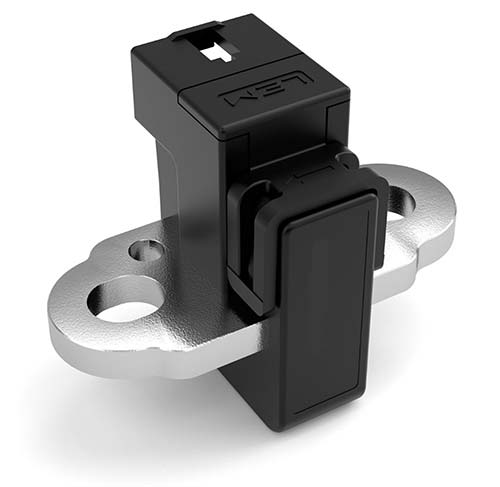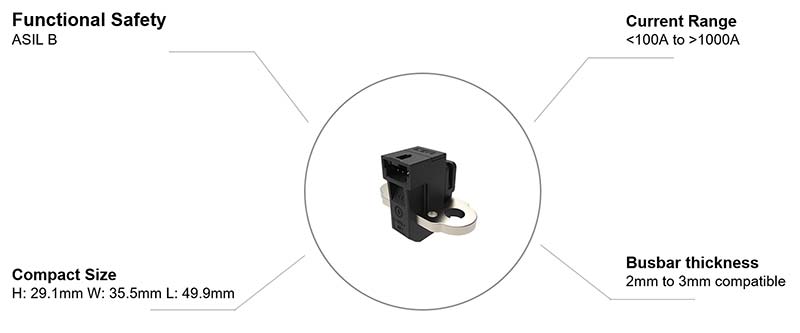 Electrical measurement technology specialist LEM launches the new SMU family. The Single Monitoring Unit (SMU) brings previously unseen performance levels to all types of EV technologies – Full Hybrid Electric Vehicles (FHEVs), Plug-in Hybrid Electric Vehicles (PHEVs) and Battery Electric Vehicles (BEVs).
Electrical measurement technology specialist LEM launches the new SMU family. The Single Monitoring Unit (SMU) brings previously unseen performance levels to all types of EV technologies – Full Hybrid Electric Vehicles (FHEVs), Plug-in Hybrid Electric Vehicles (PHEVs) and Battery Electric Vehicles (BEVs).
The new modular SMU family meets the needs of designers of automotive battery management systems (BMS) who are looking to extend as far as possible the maximum driving range of an electric vehicle. The SMU continuously monitors such vehicle parameters as battery performance and safety systems. They also identify anomalies and support diagnostics, which improves vehicle efficiency and ensures compliance with regulations.
The design of the new high-performance sensor recognizes the need for the smallest possible components so that EVs can weigh less and travel further on a single charge. The compact SMU measures just 29.1mm (H) x 35.5mm (W) x 49.9mm (L) while the busbar thickness is 2mm to 3mm compatible. The integrated busbar does not just keep size down and improve accuracy, it has been designed to accommodate a range of different busbar dimensions.
The key to maximizing EV driving range is accurate State of Charge (SOC) estimation, which means precisely determining the remaining battery capacity. Accurate SOC estimation helps to optimize battery life and prevent unexpected power loss, while enhancing user confidence and delivering efficient energy management.
 The SMU is a Hall effect technology sensor, open loop configuration using the latest LEM9 Application-Specific Integrated Circuit (ASIC). Designed by LEM to add intelligence at the Battery Disconnect Unit (BDU) level, the ASIC makes it possible to measure environmental factors while ensuring accurate sensor performance.
The SMU is a Hall effect technology sensor, open loop configuration using the latest LEM9 Application-Specific Integrated Circuit (ASIC). Designed by LEM to add intelligence at the Battery Disconnect Unit (BDU) level, the ASIC makes it possible to measure environmental factors while ensuring accurate sensor performance.
Many new features have been built into the SMU to optimize performance. For example, accuracy is improved by software algorithms that can correct or adjust measurement data to account for distortions or errors caused by mechanical stresses. This enhances the precision of the sensor’s readings and makes it possible to reach 1% of accuracy up to 1300A and <1.7% up to 1500A. The current range of up to +/-1500A is ideal for BMS applications.
Other features include digital calibration, which provides end-to-end (E2E) protection, improved offset/sensitivity calibration, and such diagnostic warnings as under- or over-voltage. In addition, malfunction is avoided by a dedicated safe state mode should such issues as sensitivity and offset drift, temperature measurement errors, or memory errors (RAM, FLASH, EEPROM, ROM) be detected. Also, the sensor’s internal microcontroller includes a built-in algorithm to correct for any magnetic offset, ensuring more accurate and reliable sensor readings by eliminating errors caused by residual magnetism.
The new sensor’s high isolation levels enable it to withstand voltage differences greater than 800 V between components or between the device and its surroundings. This improves safety and prevents electrical interference or damage.
Finally, unlike other similar sensors on the market, the new SMU family is compliant with functional safety conditions. This means that it satisfies the stringent Automotive Safety Integrity Level (ASIL) requirements built into the ISO 26262 standard for functional safety in vehicles. The first version to enter the market is ASIL B ready with the possibility to extend it to ASIL C. ASIL B applies to systems where moderate safety risks are present, balancing safety with practicality in automotive design, and the new SMU family incorporates all the safety mechanisms and design processes that are required to address the risks associated with safety-critical automotive applications.
Says Jérémie Piro, Global Product Manager BMS at LEM: “It’s widely understood that the EV industry is continually looking to maximize driving range. BMS designers will welcome a new sensor that is not just compact but also ensures accurate SOC estimation, which are the two main factors. We are very excited that the new SMU family will bring previously unseen performance levels to the FHEV, PHEV and BEV sectors.”


